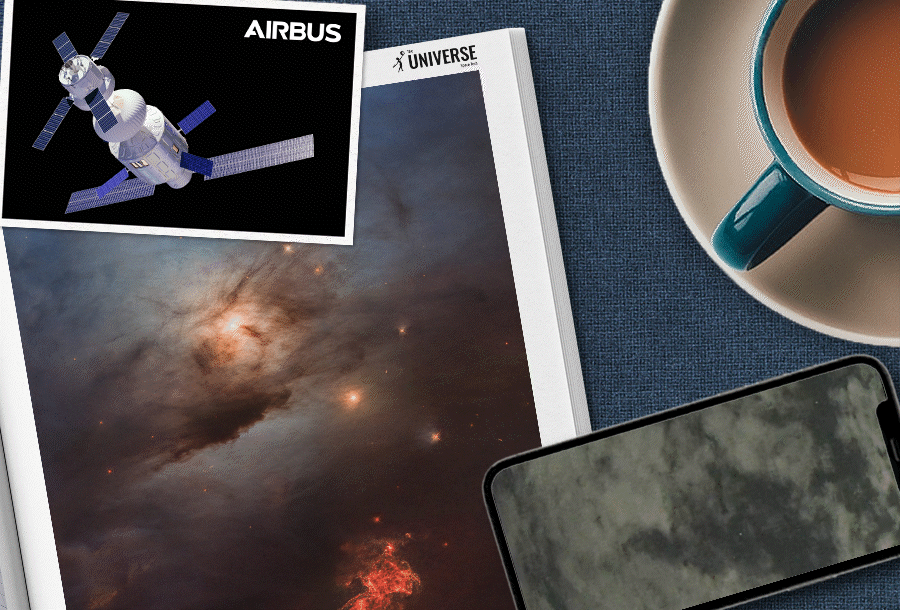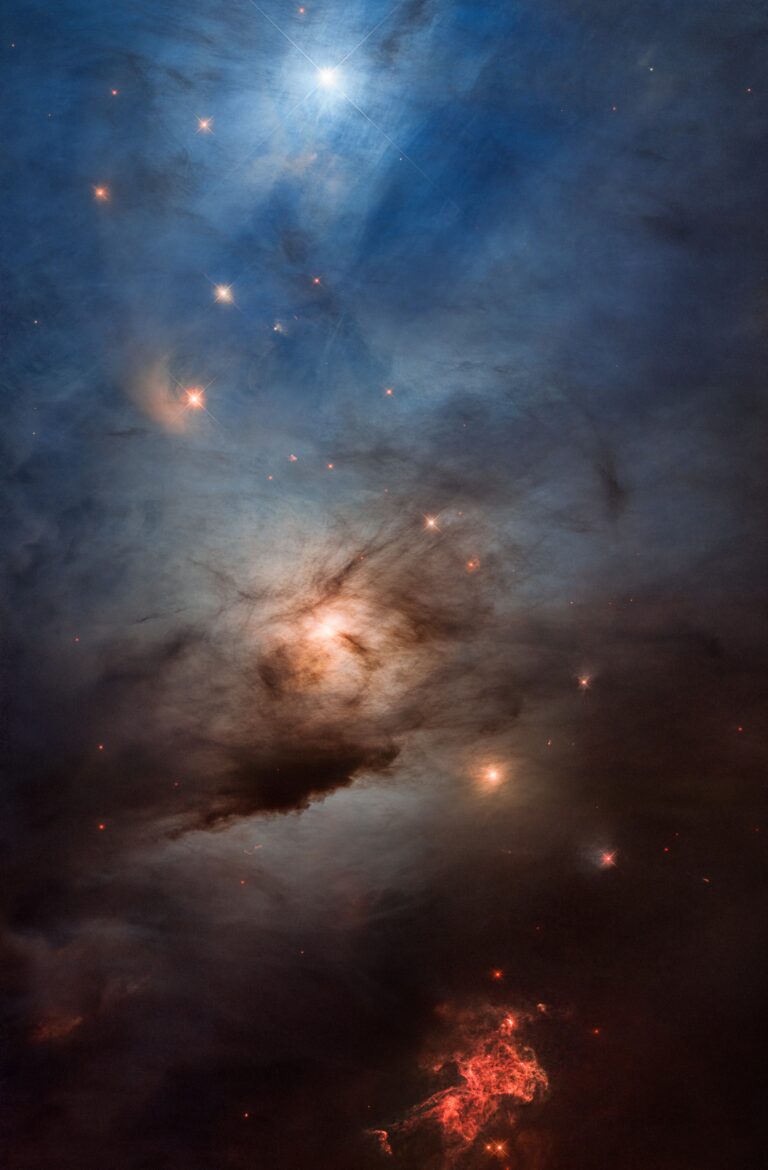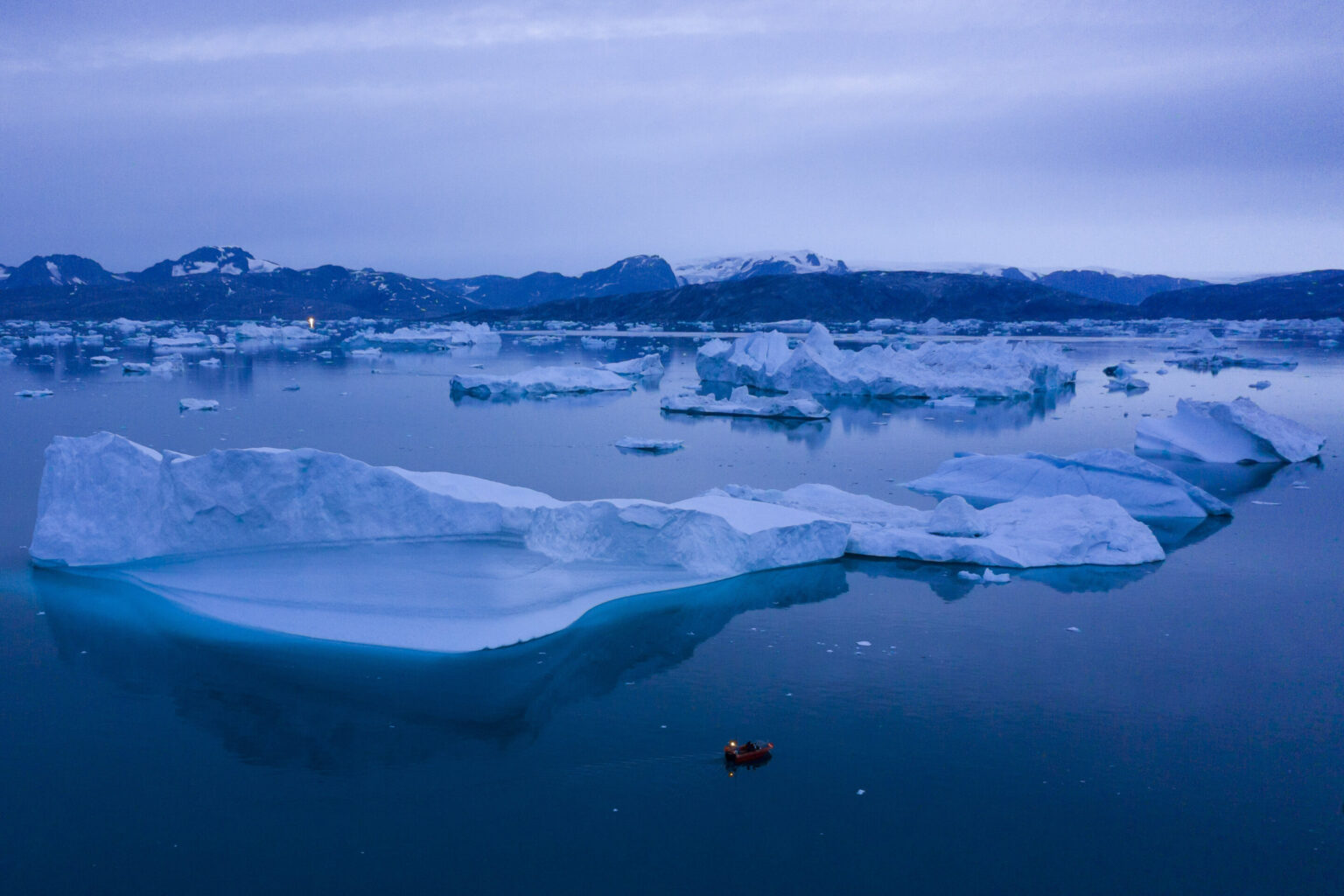Selection of the most interesting space news for the week: Astronomer noticed NASA lasers over Japan; a perfumer recreated the smell of the Moon; and we tell you why scientists do not warn about the “Kyiv bolide”.

“A fool’s brain digests philosophy into folly, science into superstition”
― George Bernard Shaw
NASA satellite crashes in the Sahara
The old NASA RHESSI solar observation satellite, which was accused of scaring the residents of Kyiv on the evening of April 19, really fell to the Earth. However, the Ukrainian air defense was not involved in this. According to the US Department of Defense, it happened over the Sahara Desert.
It happened at 2:21 a.m. GMT+3 somewhere over the Egypt–Sudan border. This information was confirmed by astrophysicist Jonathan McDowell, who previously denied the fall of RHESSI on Kyiv. NASA officials said that most of the spacecraft’s debris probably burned up in the Earth’s atmosphere, although it is expected that some parts may still have reached the surface. But this is a sparsely populated area, so hardly anyone was hurt.
Starship explodes during the first orbital flight
On April 20, SpaceX carried out the long-awaited first orbital test of the new Starship space transport system. The giant rocket managed to break away from the launch pad and start ascent. Unfortunately, in the future, Starship got out of control, which led to its destruction.
At the time of takeoff, only 27 of the 33 Raptor engines were working on the Super Heavy stage. However, due to the large number of inactive engines, as well as the fact that they were located in one part of the stage, the Starship began to deviate from the course. After overcoming the 30 km mark, the huge rocket spun, after which it literally performed several 360-degree turns. But at some point, Starship, nevertheless, exploded. Most likely, it was undermined by on-board automation in order to avoid the risks associated with the fall of an out-of-control rocket. In total, the Starship flight lasted three minutes.
Comfort and Artificial Gravity: Airbus unveils ISS replacement
The European aerospace giant Airbus has presented its own concept of the space station of the future, which will be more spacious and comfortable. The multipurpose orbital module called LOOP has three decks that are connected by a common tunnel surrounded by a built-in greenhouse for growing nutritious plants. The orbital environment is designed for a crew of four, but can be configured to accommodate up to eight astronauts, Airbus says in a statement. The diameter of the station will be 8 meters. In the basic configuration, the LOOP contains a living deck, a science deck and a special centrifuge that creates artificial gravity, where astronauts will be able to feel relief from the harmful conditions of weightlessness.
Perfumer reproduces the smell of the Moon: What does it smell like?
Every day we are surrounded by a variety of aromas: morning coffee with a fragrant croissant, spring color outside the window or just the pleasant perfume of a colleague in the office. But have you ever wondered what the Moon smells like? The French aroma sculptor and scientific consultant Michael Moisseeff said that he reproduced the smell of our natural moon based on the stories of the first astronauts who set foot on its surface half a century ago. “The Moon smells like spent gunpowder. This is exactly the smell Buzz Aldrin felt when he took off his helmet in the lunar module on the Moon in 1969, right after he left its surface,” Moisseeff wrote. Unless space flight technology quickly becomes cheaper and more affordable over the next few decades, most of us won’t ever be able to smell the Moon. But, fortunately, we can get the opportunity to feel an imitation of the smell in Toulouse, France.
NASA sky lasers are spotted over Japan
A Japanese astronomer has noticed spectacular green lines of light breaking through the cloudy sky. The curator of the Hiratsuka City Museum and amateur astronomer Daichi Fujii, using motion detector cameras, recorded green pulsating lines shining through the cloudy night sky. Comparing his mysterious pictures with orbital data, Fujii found out that the green flashes belong to NASA‘s Ice Cloud and Land Elevation Satellite 2, or ICESat-2, which flew over Japan on that fateful night. The Space Agency subsequently confirmed that the green laser pulses originate from their satellite. They were seen for the first time from the surface of the Earth.
The satellite, launched into orbit back in 2018, uses laser light to get accurate measurements of the height of ice, water and the Earth’s surface. The laser fires 10 thousand times per second, emitting six beams of light to the Earth at the same time.
Photo of the week

The Hubble Space Telescope will soon be 33 years old since its commissioning. To mark this milestone, scientists have shared a stunning image of the picturesque NGC 1333 nebula. The photo shows a lively stellar nursery, where new clouds of dust and gas are actively forming. This nebula is located 960 light-years away from us.
Interesting figure — 372 billion tons of water

Recently, an international group of scientists published a study of the state of ice in Greenland and Antarctica. It was based on more than 50 satellite estimates received from 17 orbital missions. They were processed by 65 scientists working under NASA and ESA programs. 99 percent of the world’s freshwater ice reserves are concentrated in Greenland and Antarctica. From 1992 to 1996, they were annually reduced by 105 billion tons. At the same time, two-thirds of the losses occurred in Antarctica.
From 2017 to 2020, annual losses were already 372 billion tons. And two-thirds of them are already in Greenland. That is, over the specified period of time, ice losses not only tripled. The place where they pass has also changed. At the same time, the acceleration is felt even compared to the beginning of the 2010s. Compared to that time, the ice is now melting by 20 percent more.
Something to read on the weekend
The bright flashes that took place in the sky over Kyiv on the evening of April 19, fortunately, were not caused by an enemy air raid. After a few hours it became clear that their “culprit” was a cosmic body that entered the earth’s atmosphere, warmed up when braking in it to high temperatures and exploded. The editors of The Universe Space Tech explain why astronomers could not warn about the “Kyiv bolide”.
The European Space Agency (ESA) sent the Jupiter Icy Moons Explorer (JUICE) research vehicle into space on April 14. Its main task is a detailed study of three of the four largest moons of Jupiter. The most interesting of them is Europa, for it has an ocean of liquid water under the ice. We tell you what interesting things JUICE will see on Europa. We also suggest that you figure out why earthlings have not yet met aliens and whether humanity can be considered the only intelligent race of the Milky Way.
Follow us on Twitter to get the most interesting space news in time
https://twitter.com/ust_magazine

